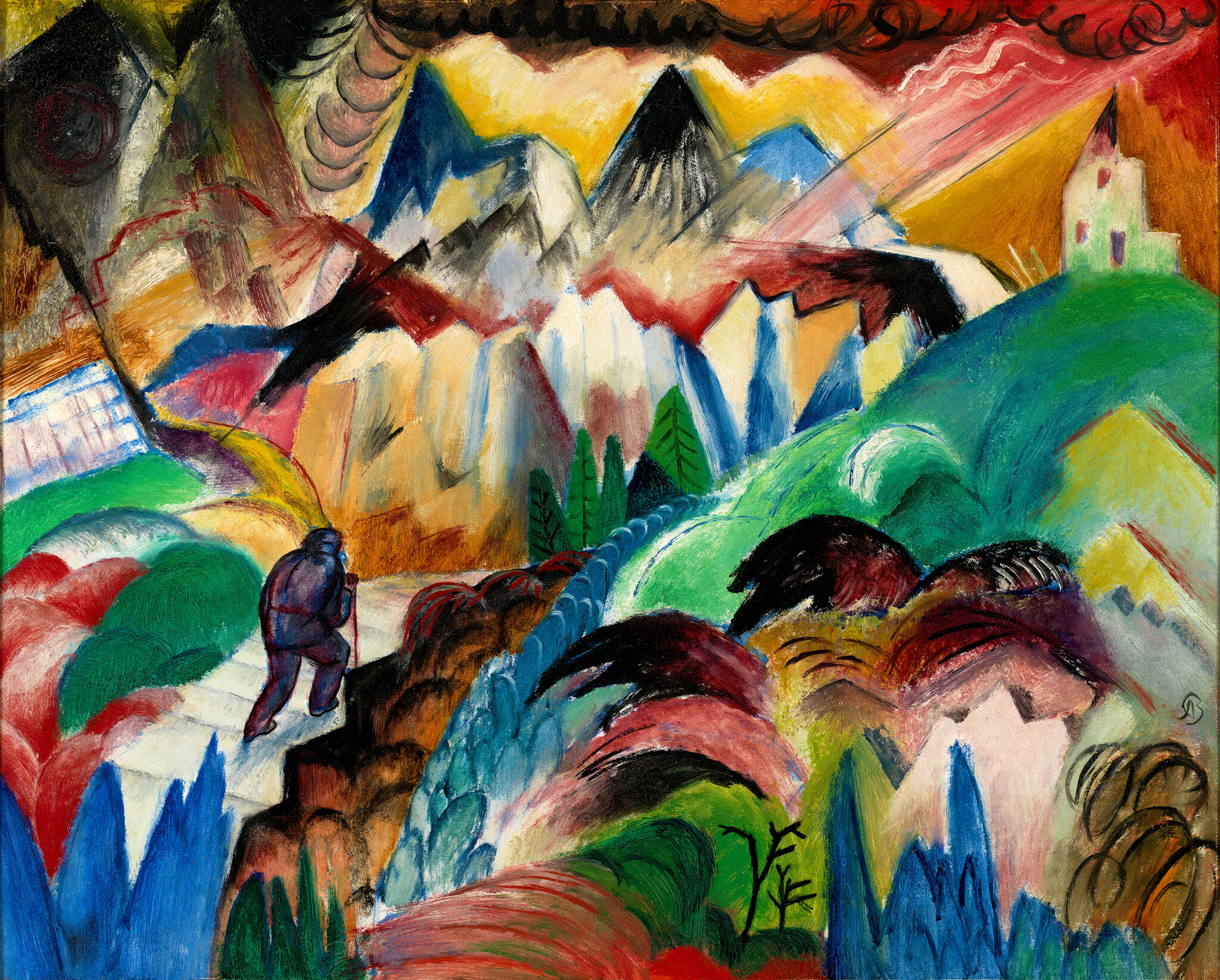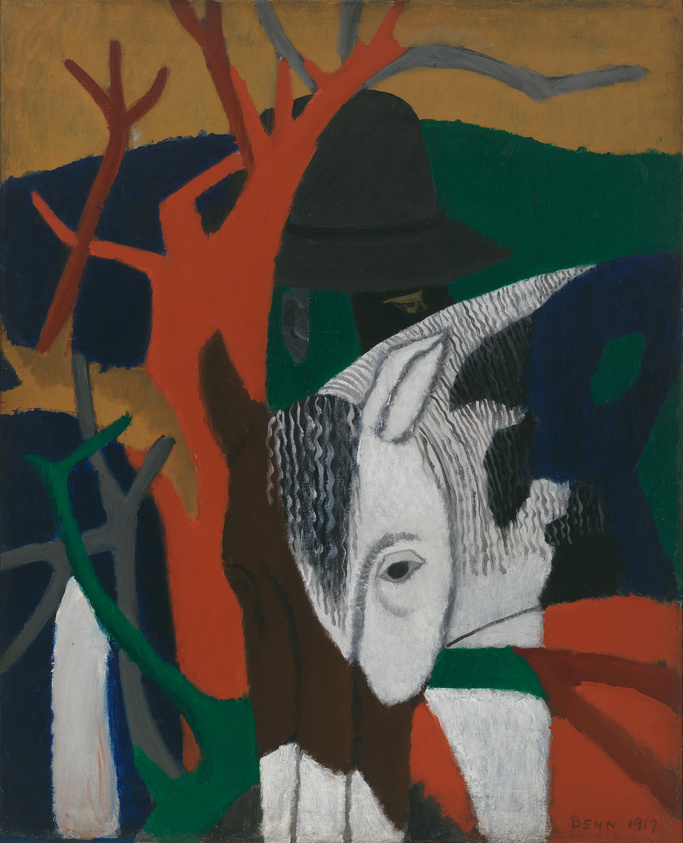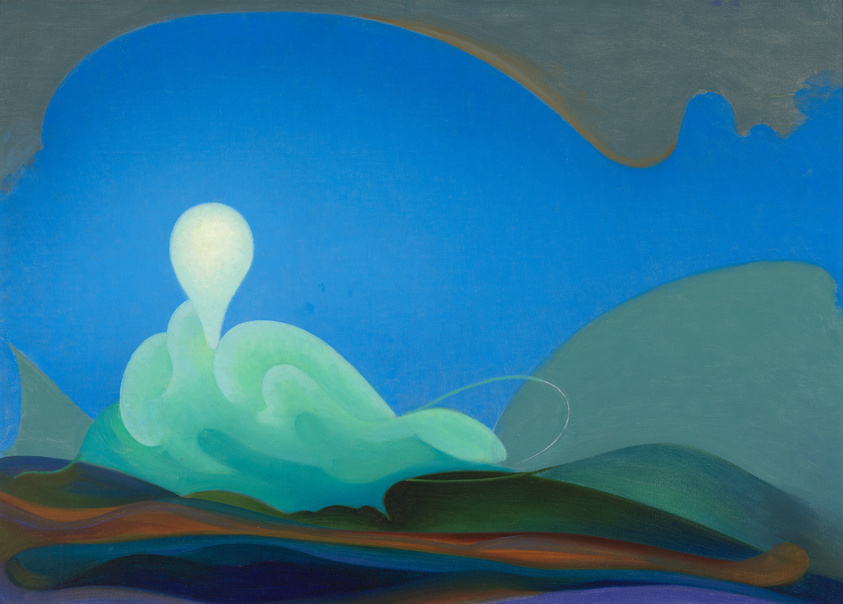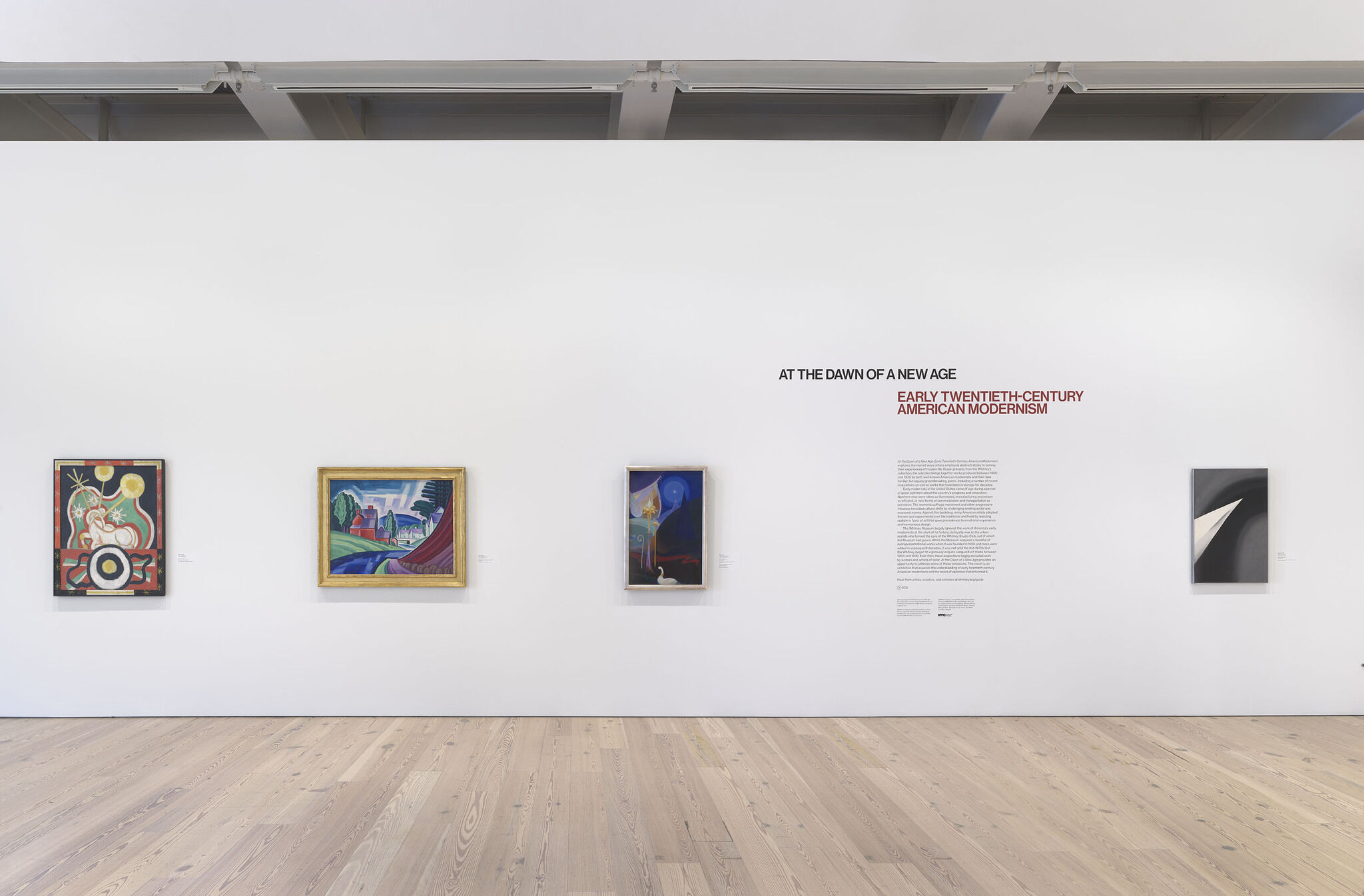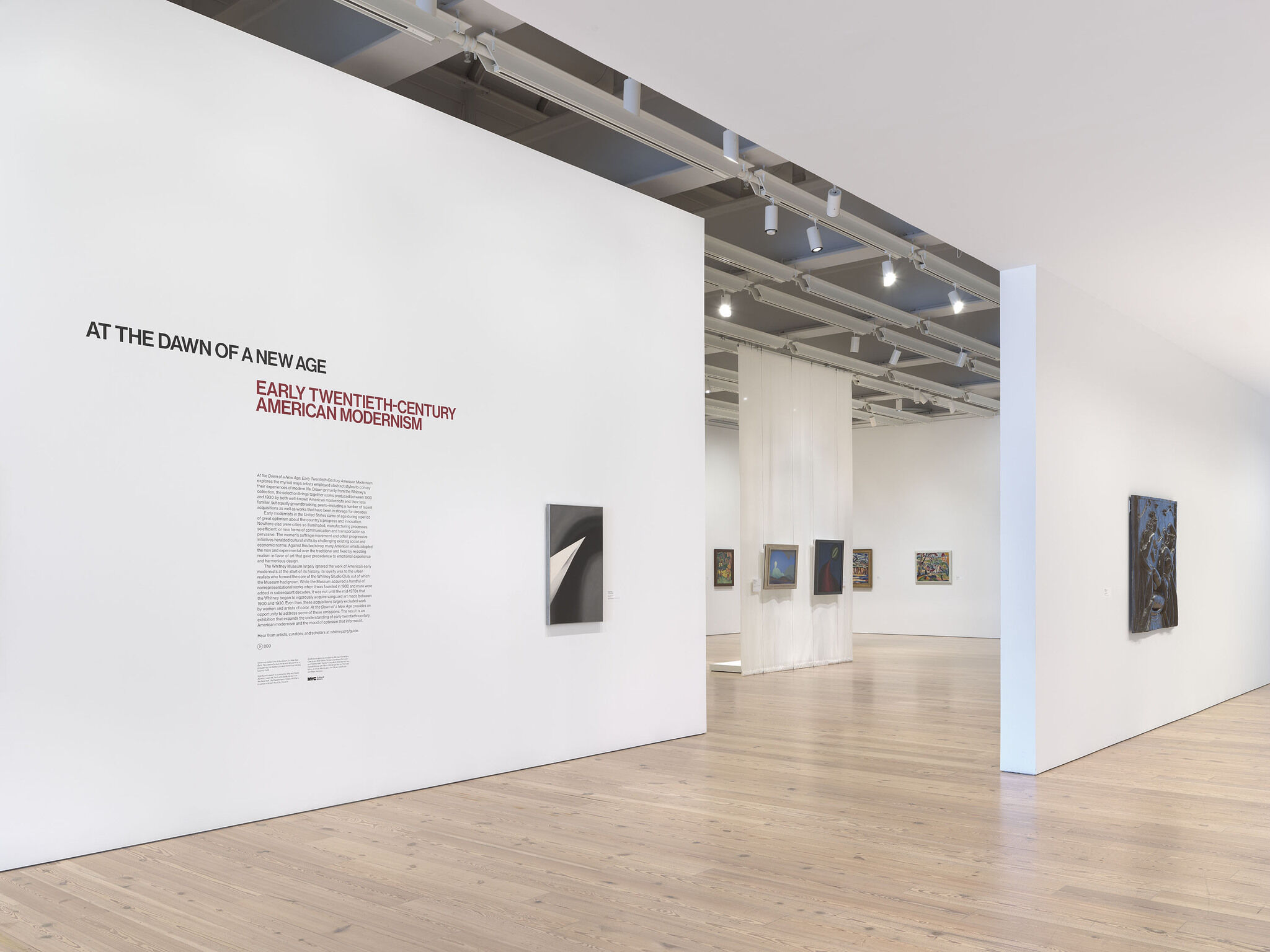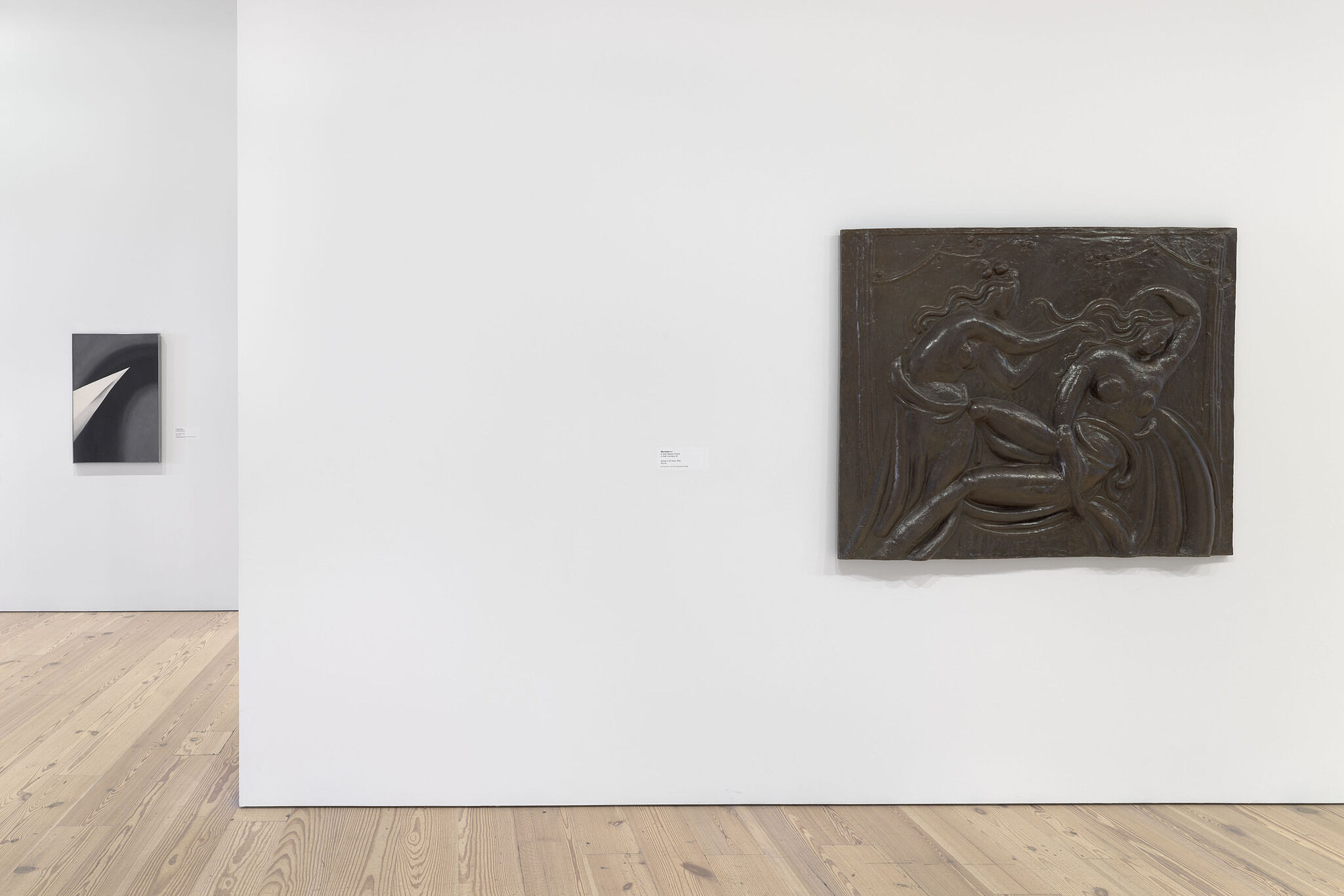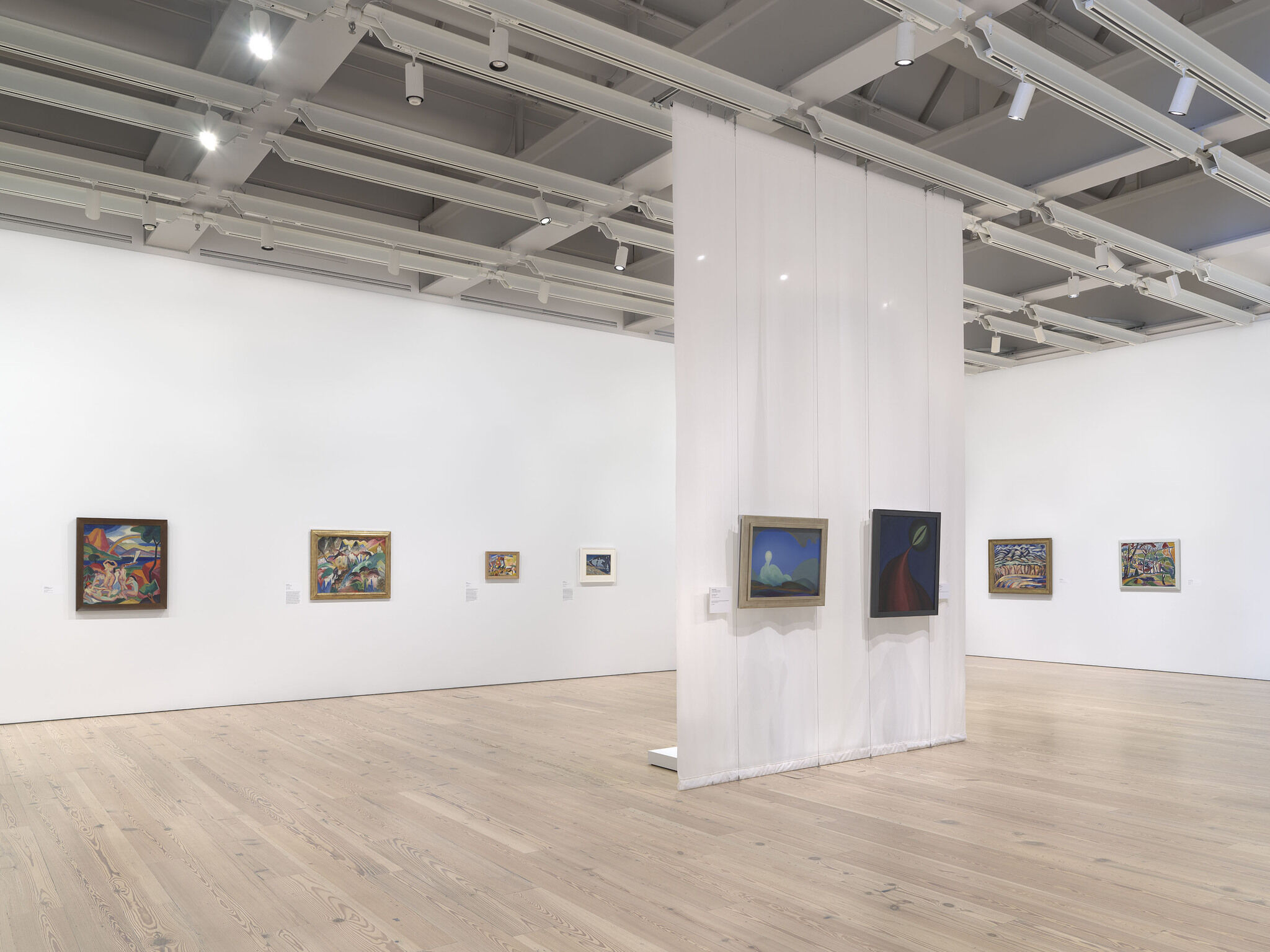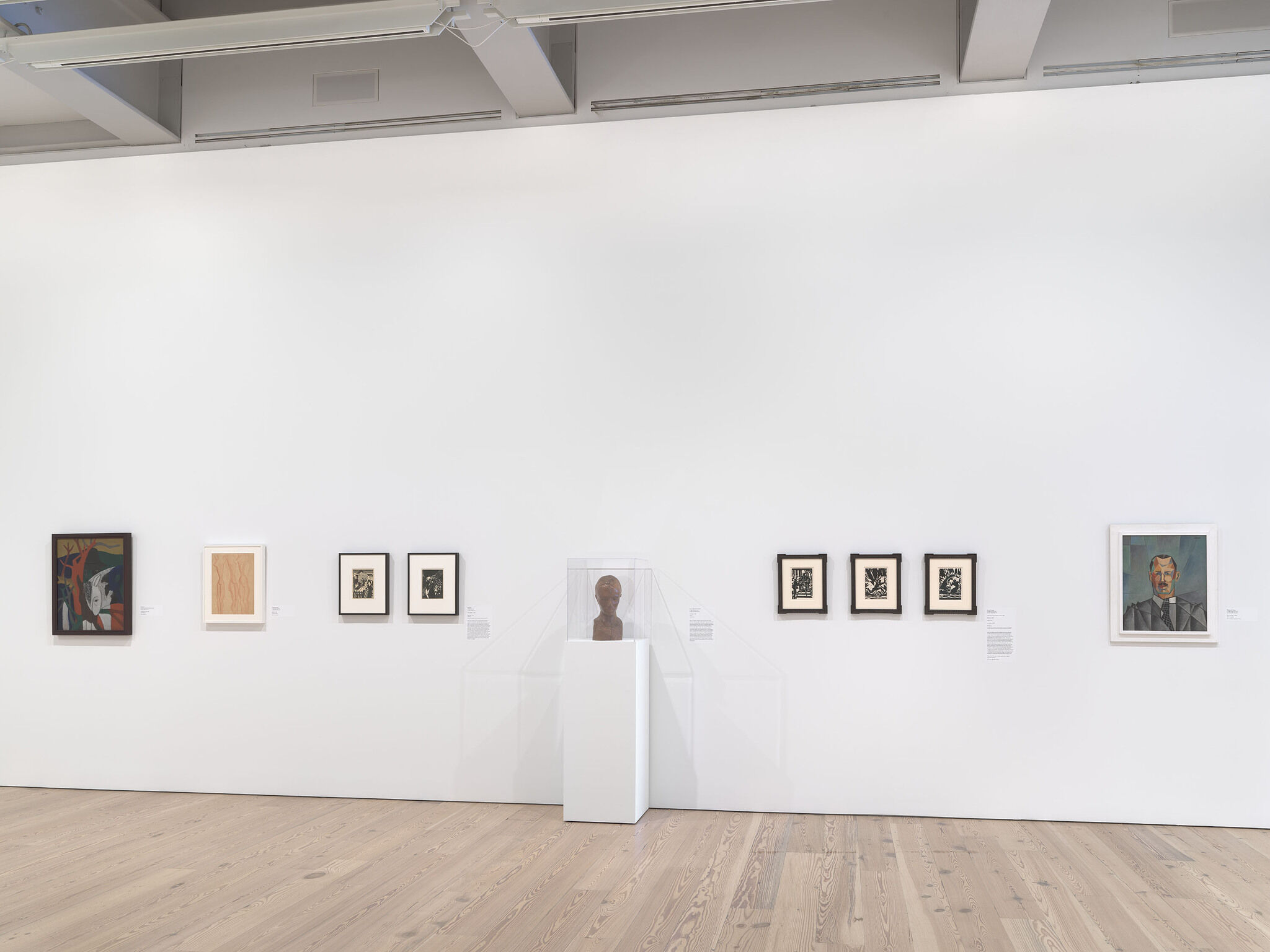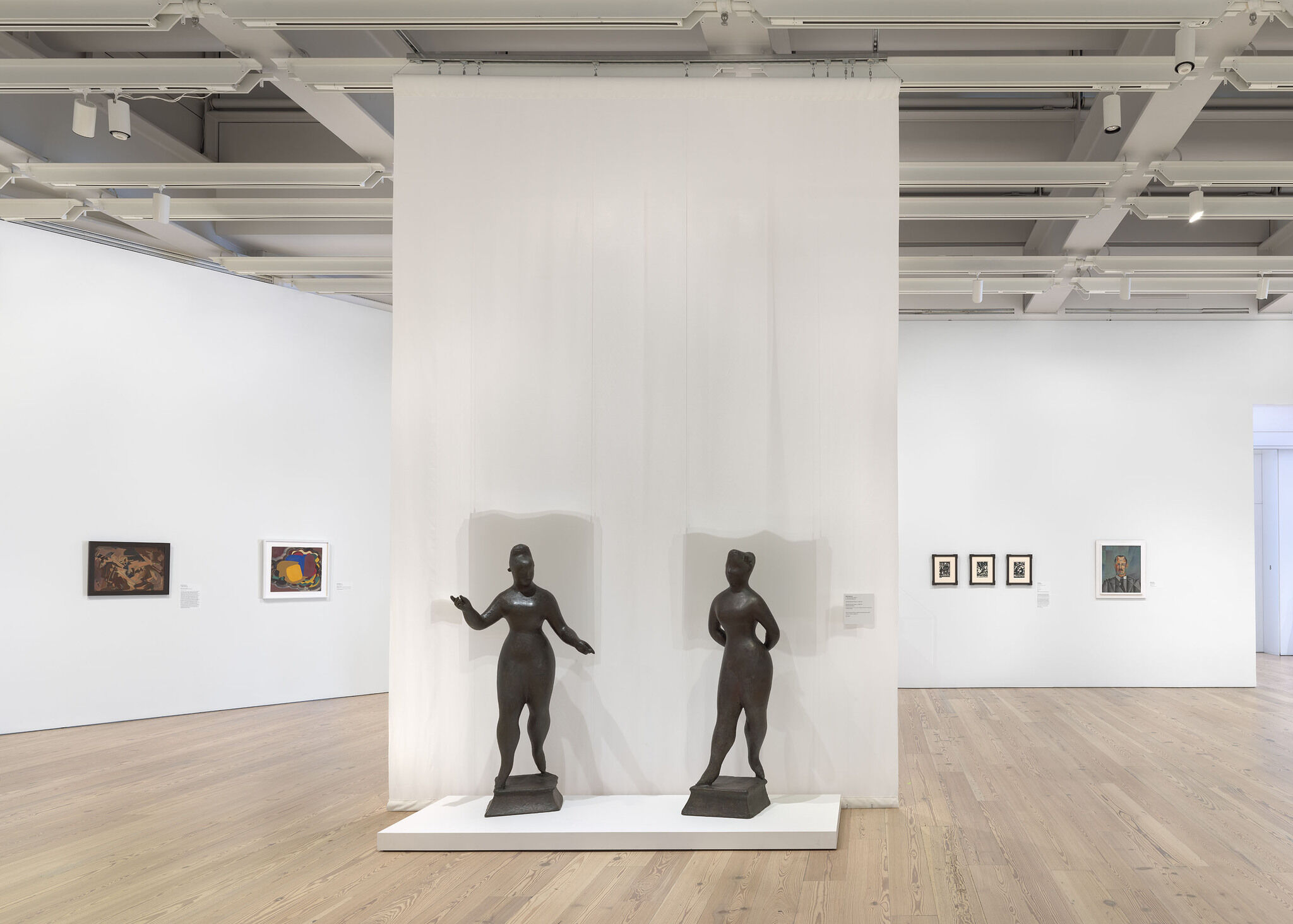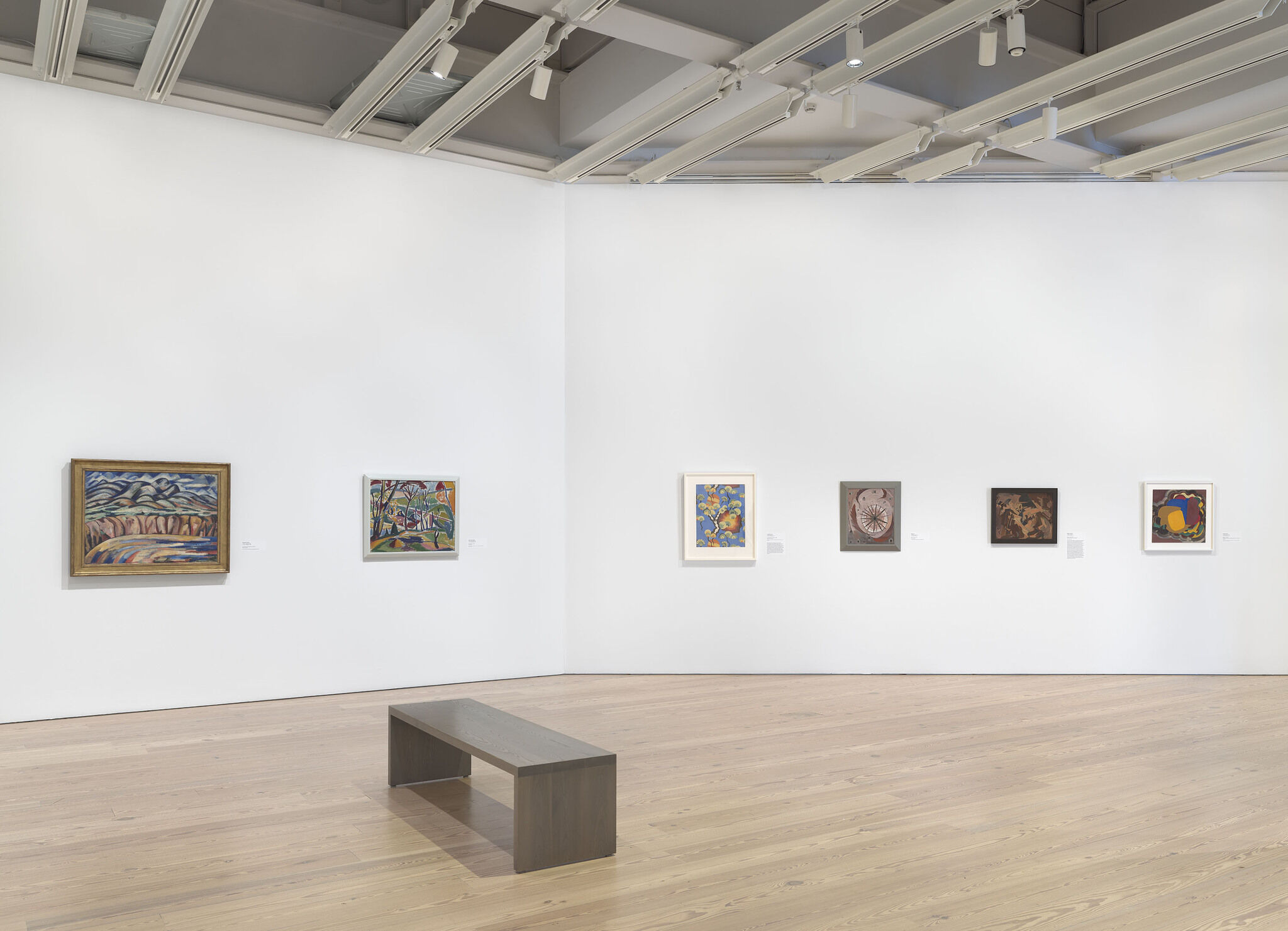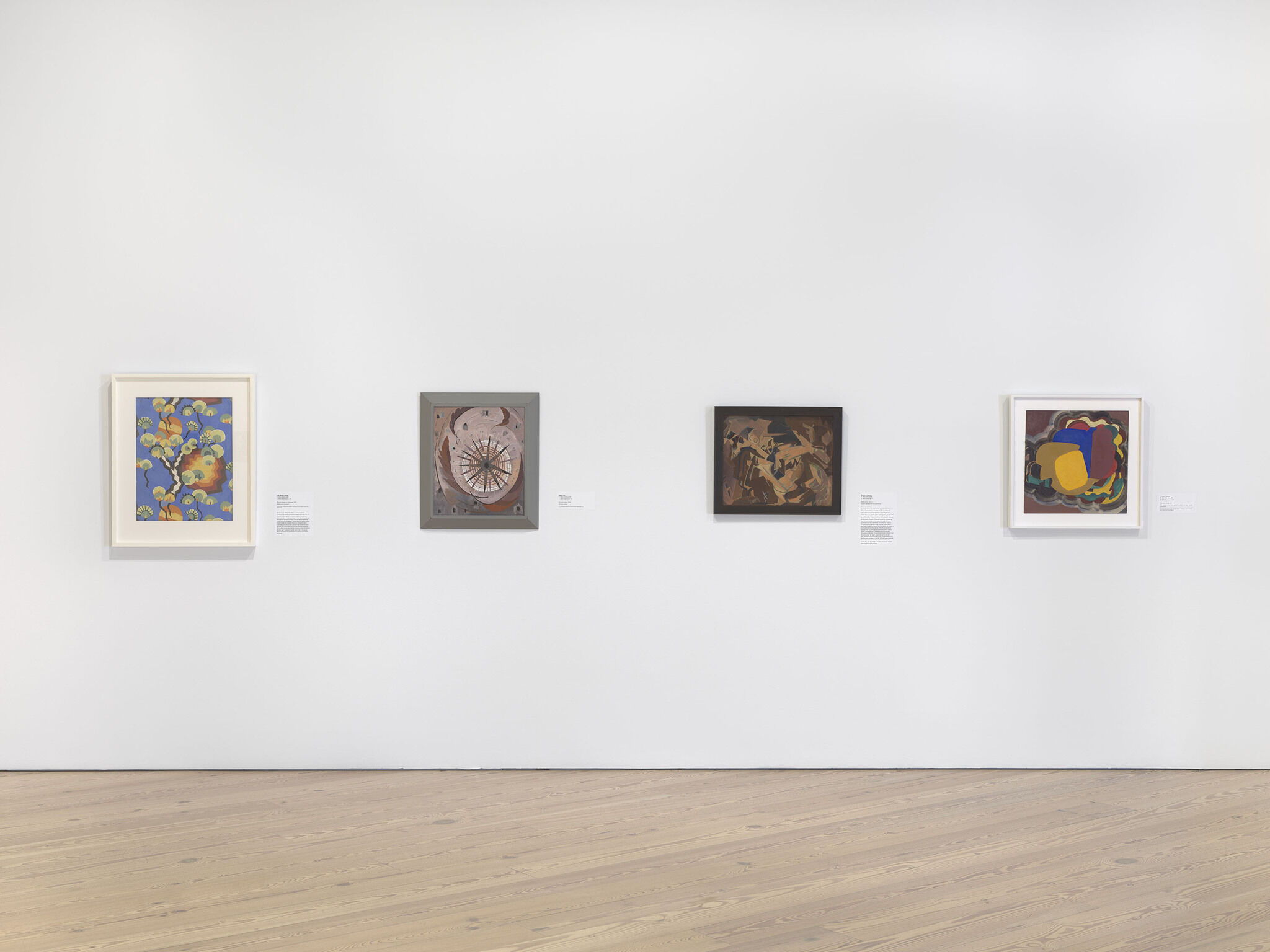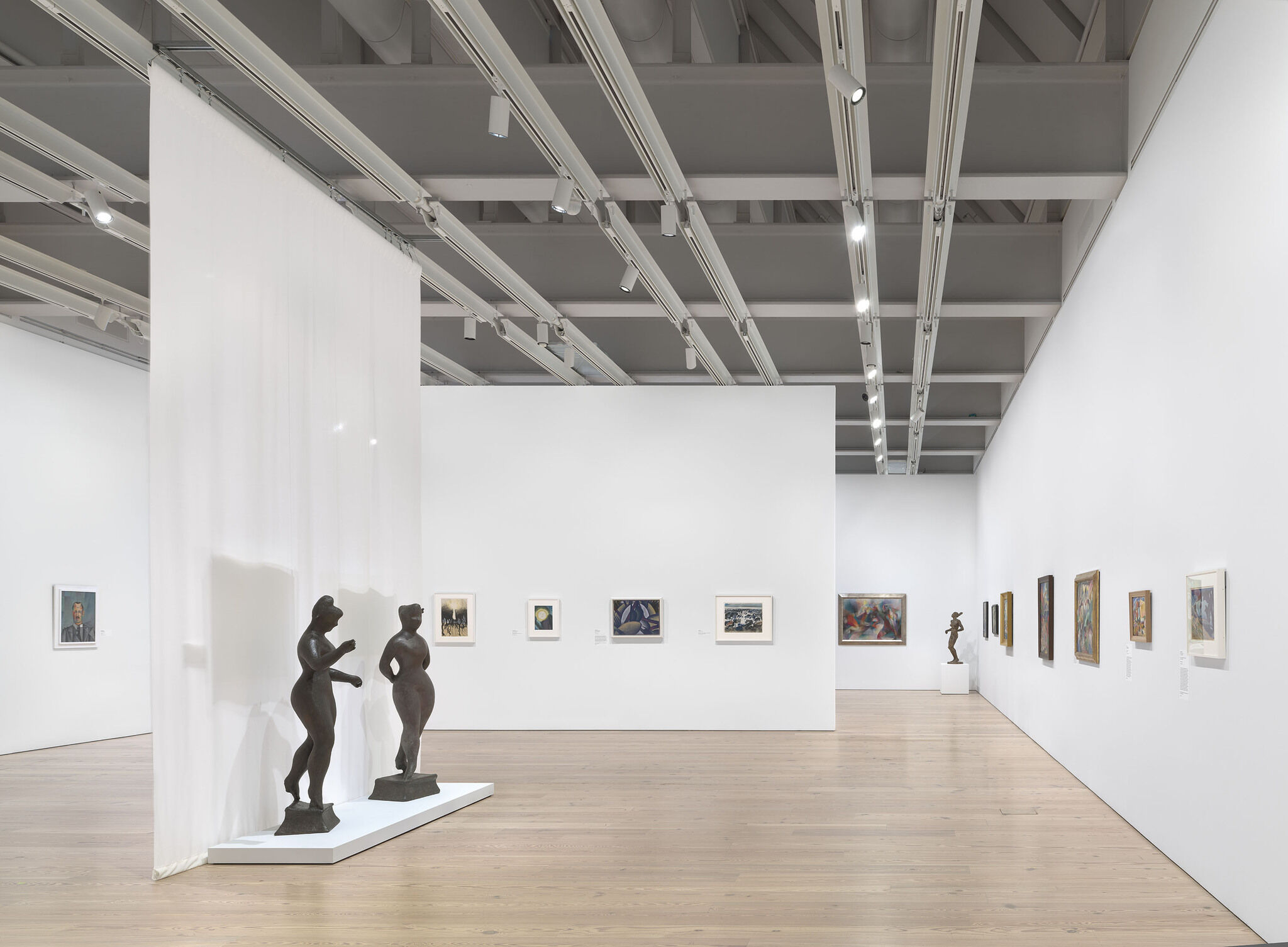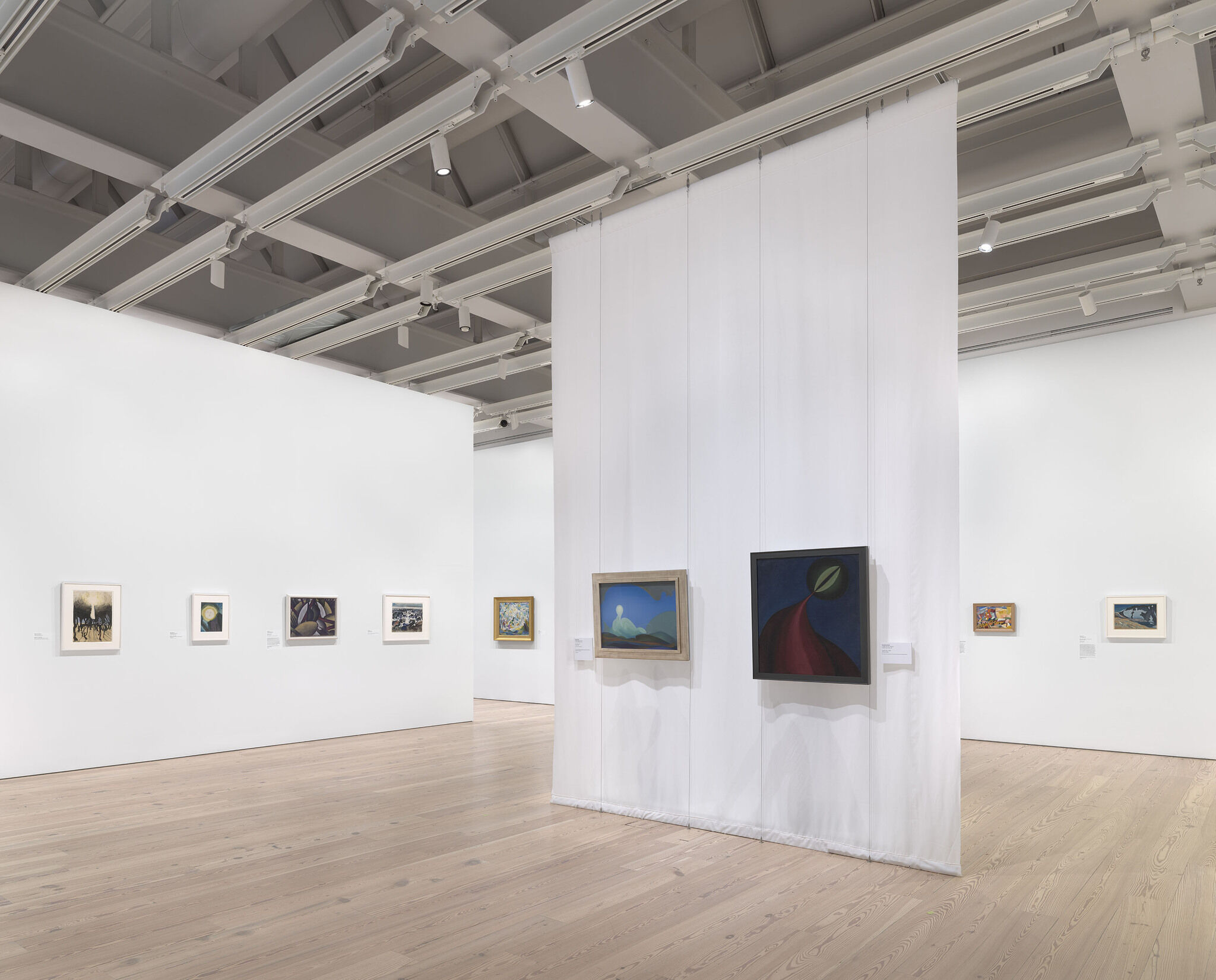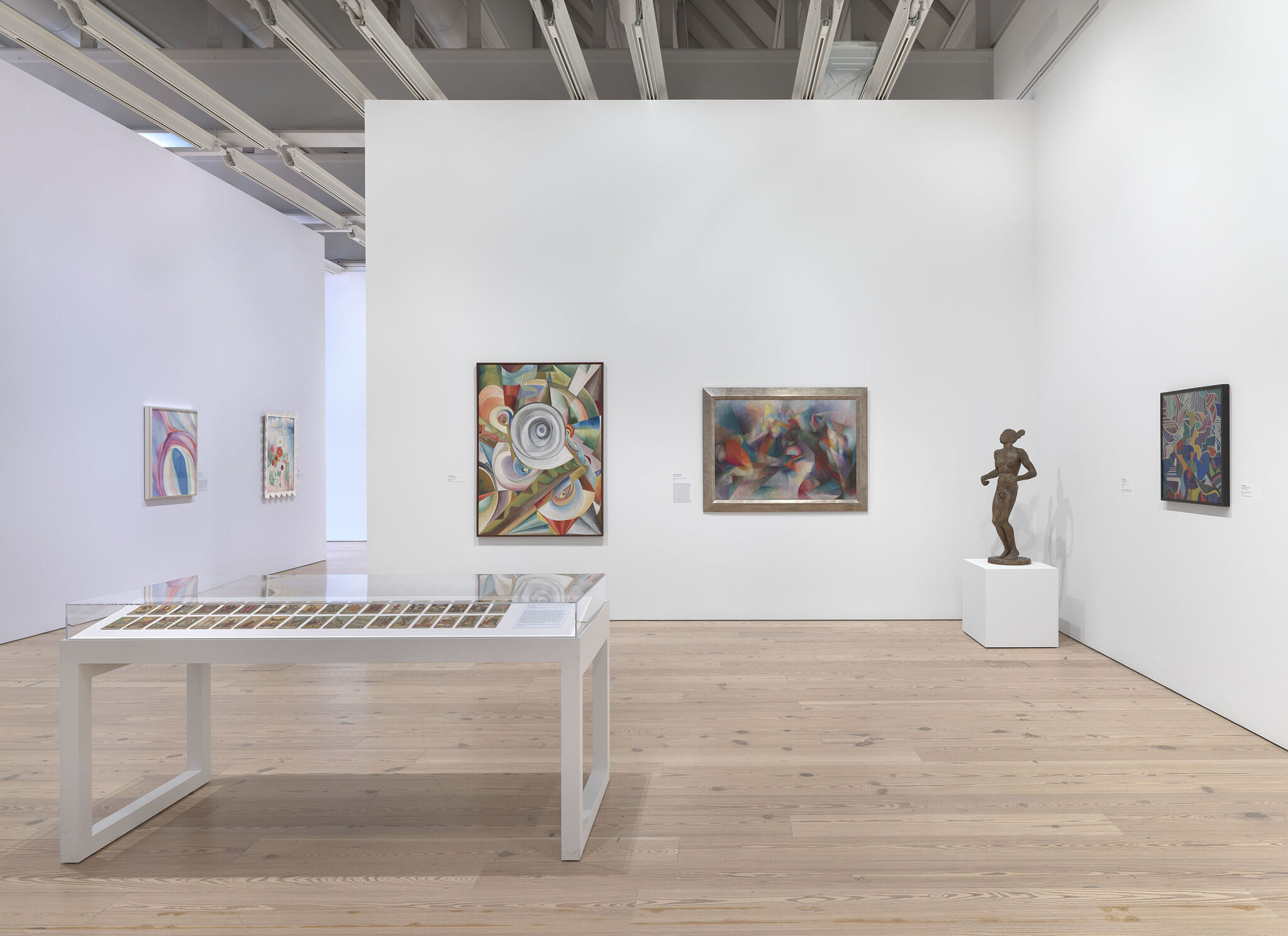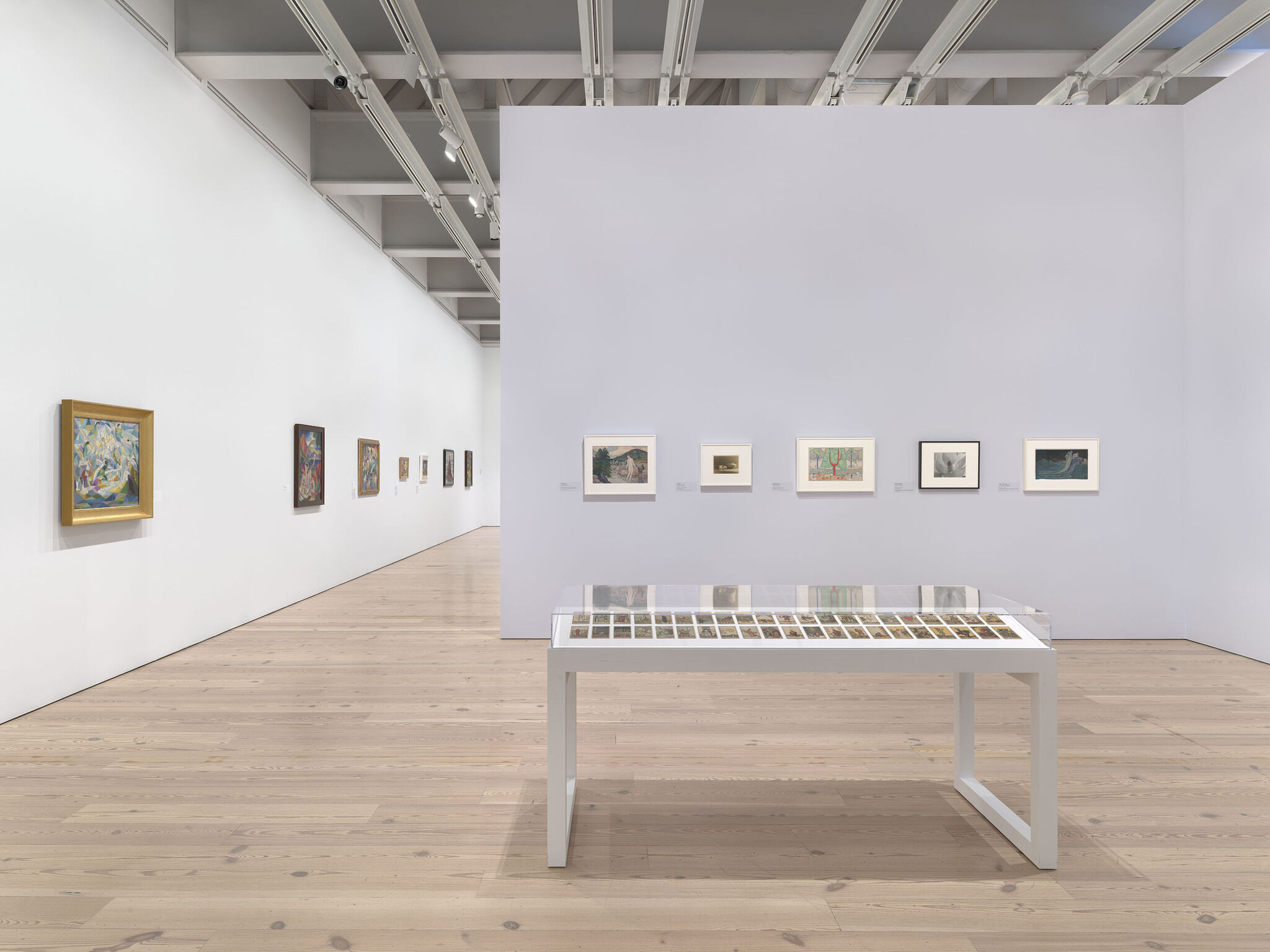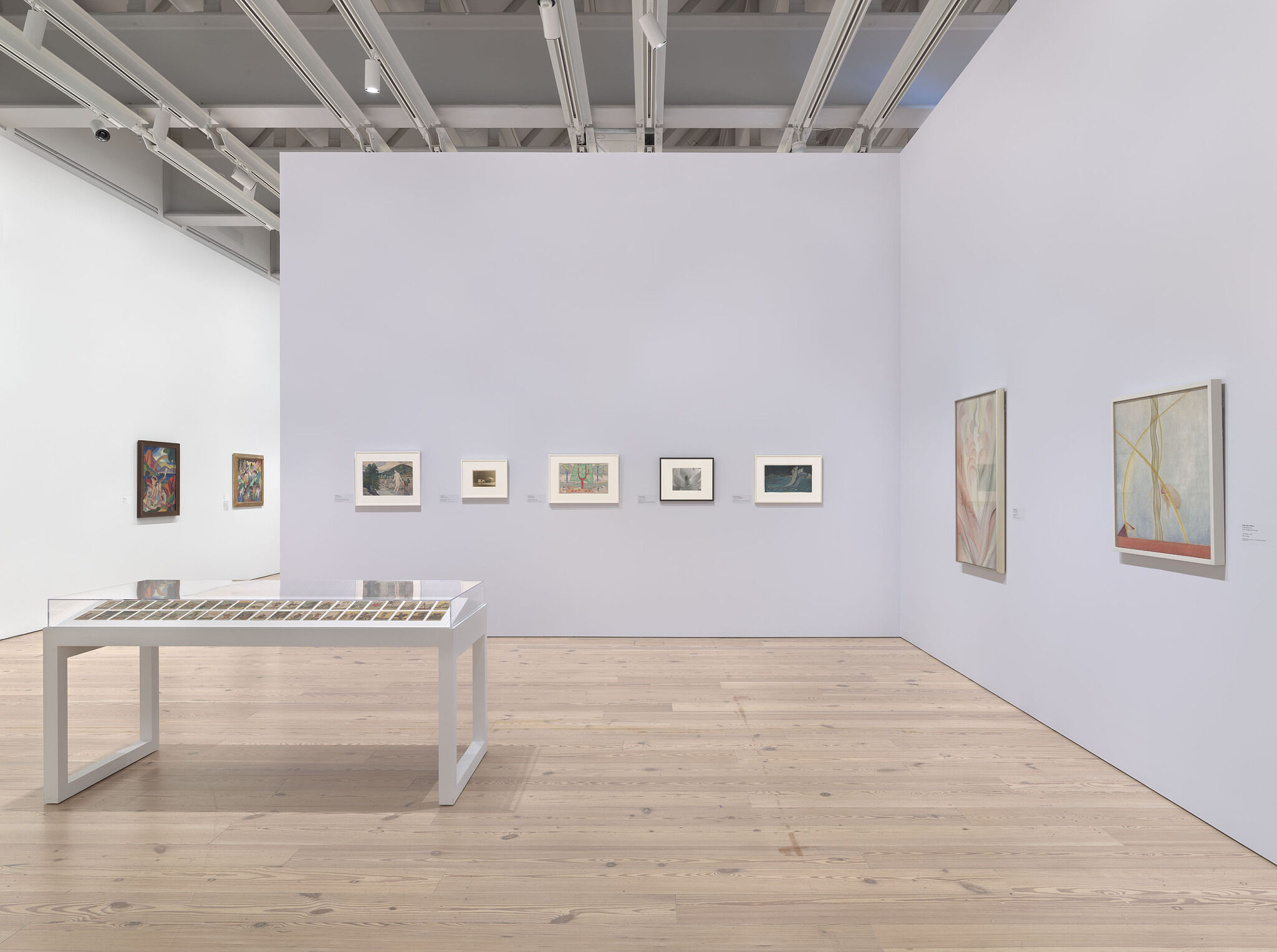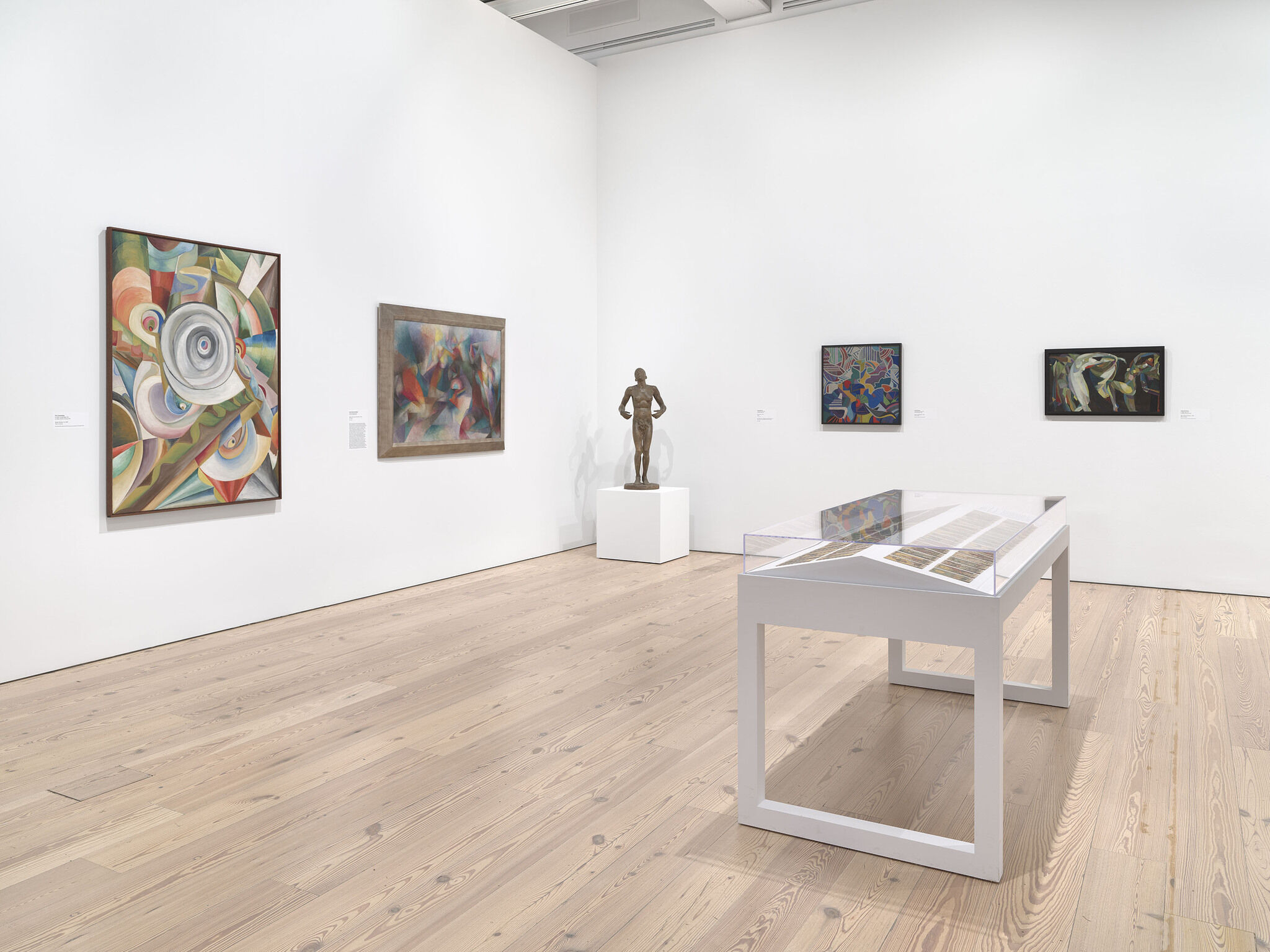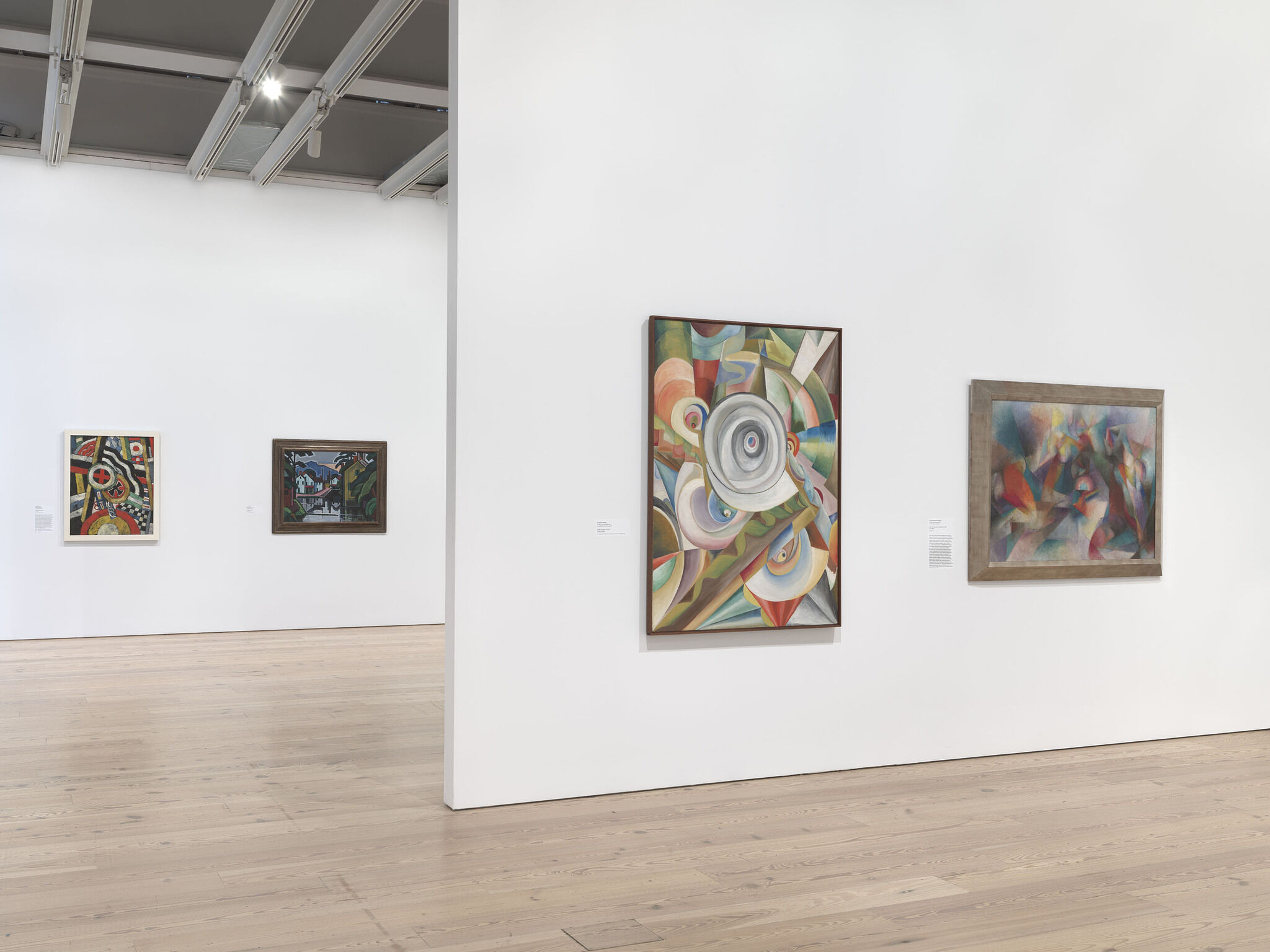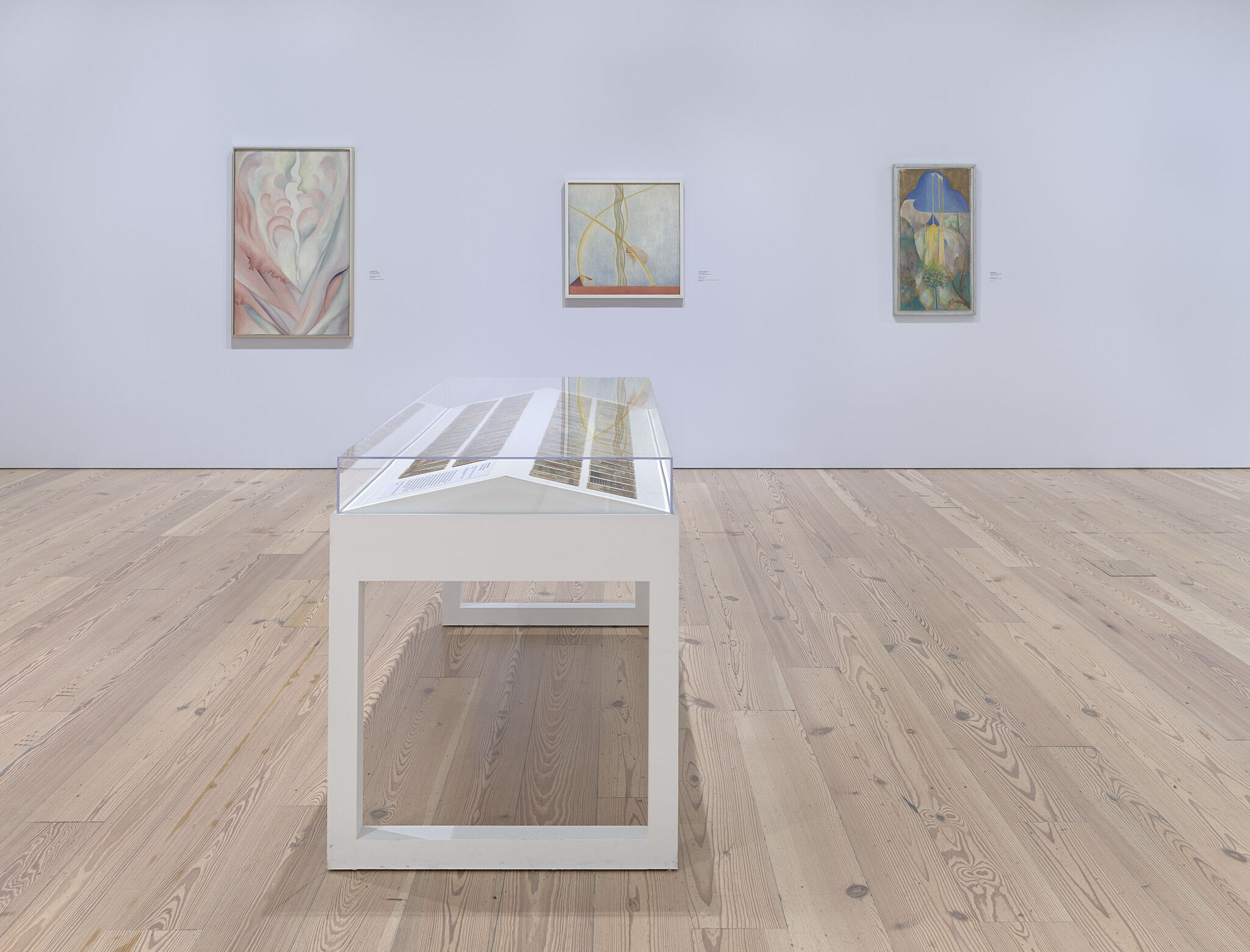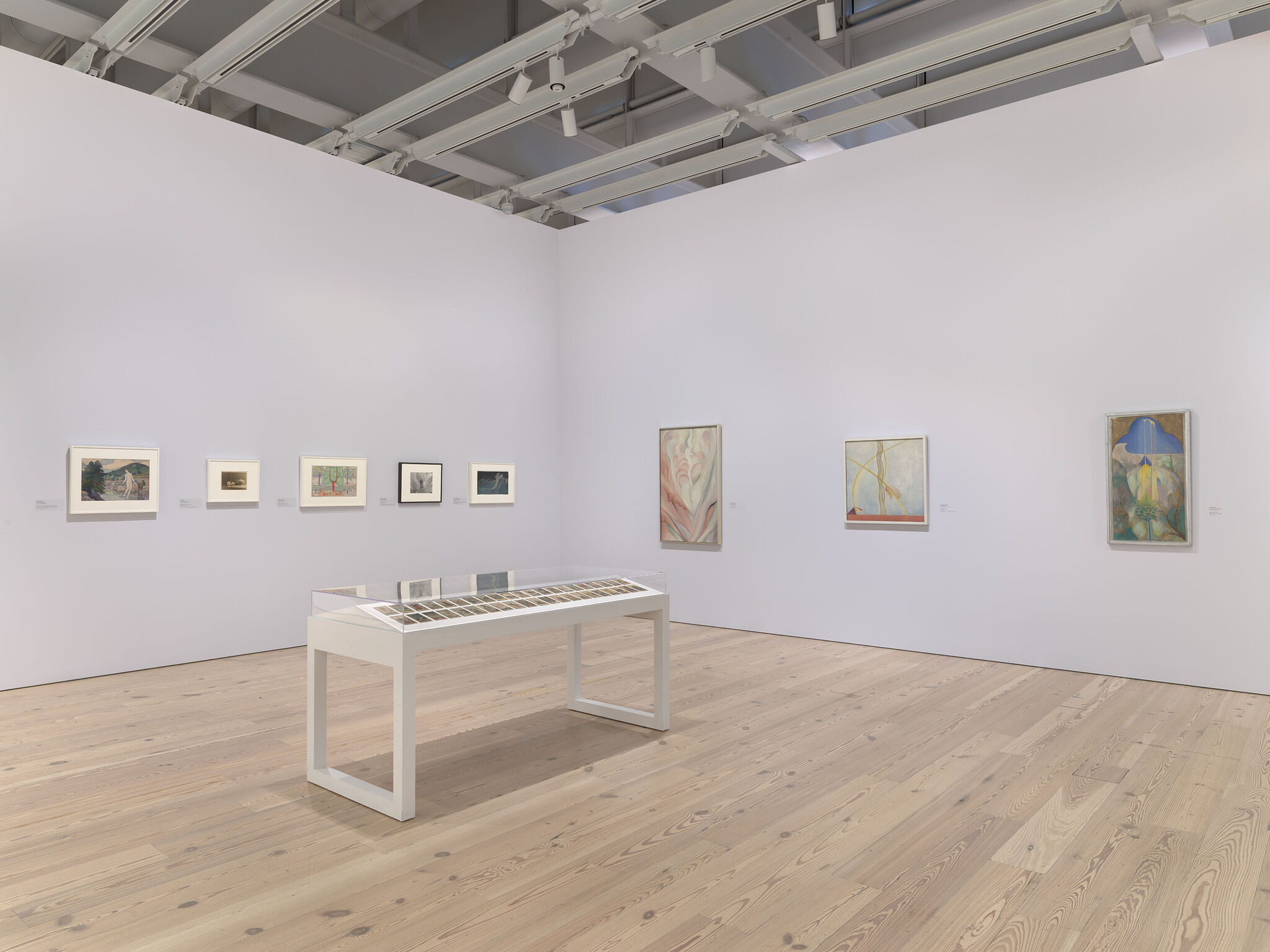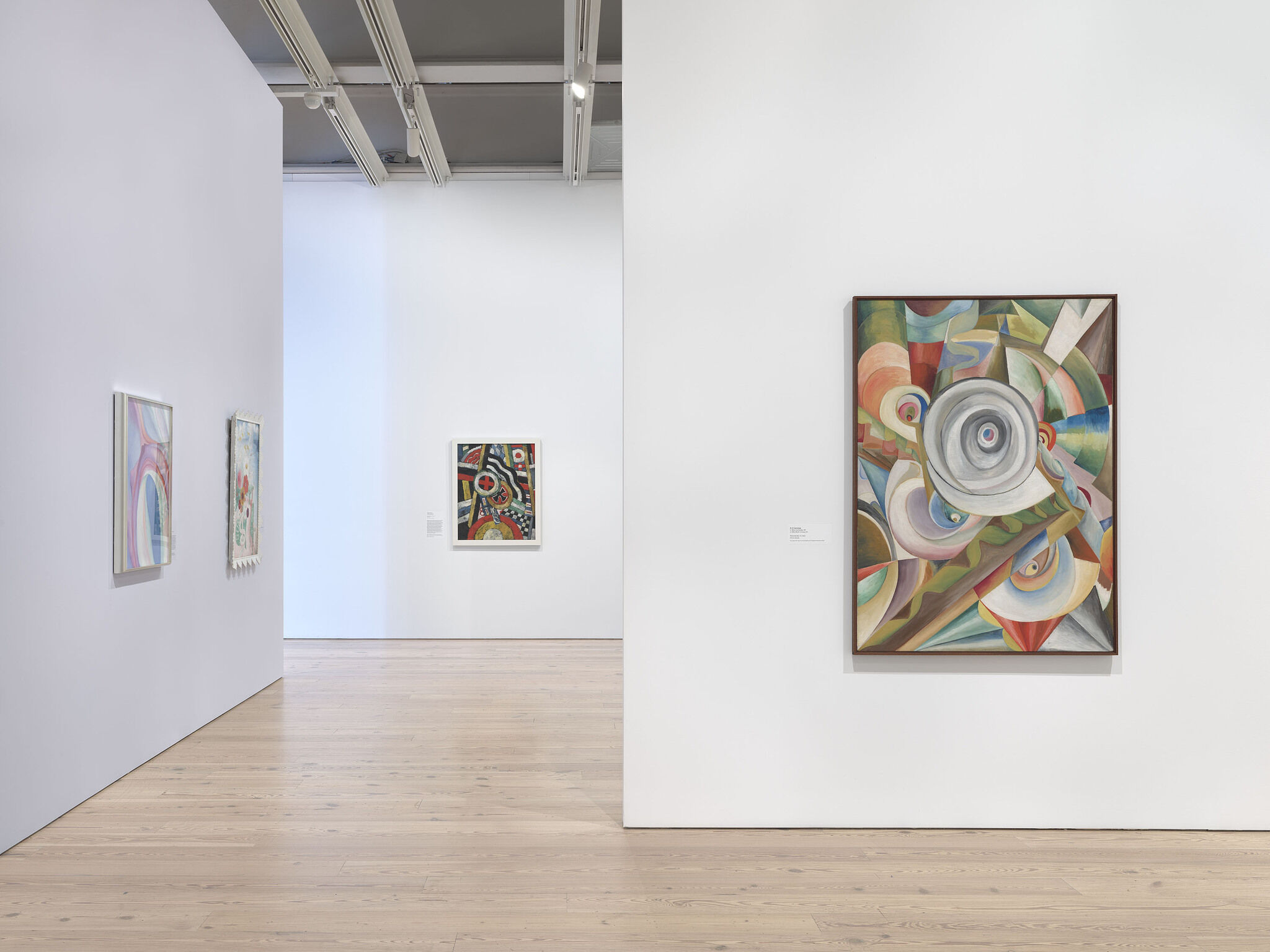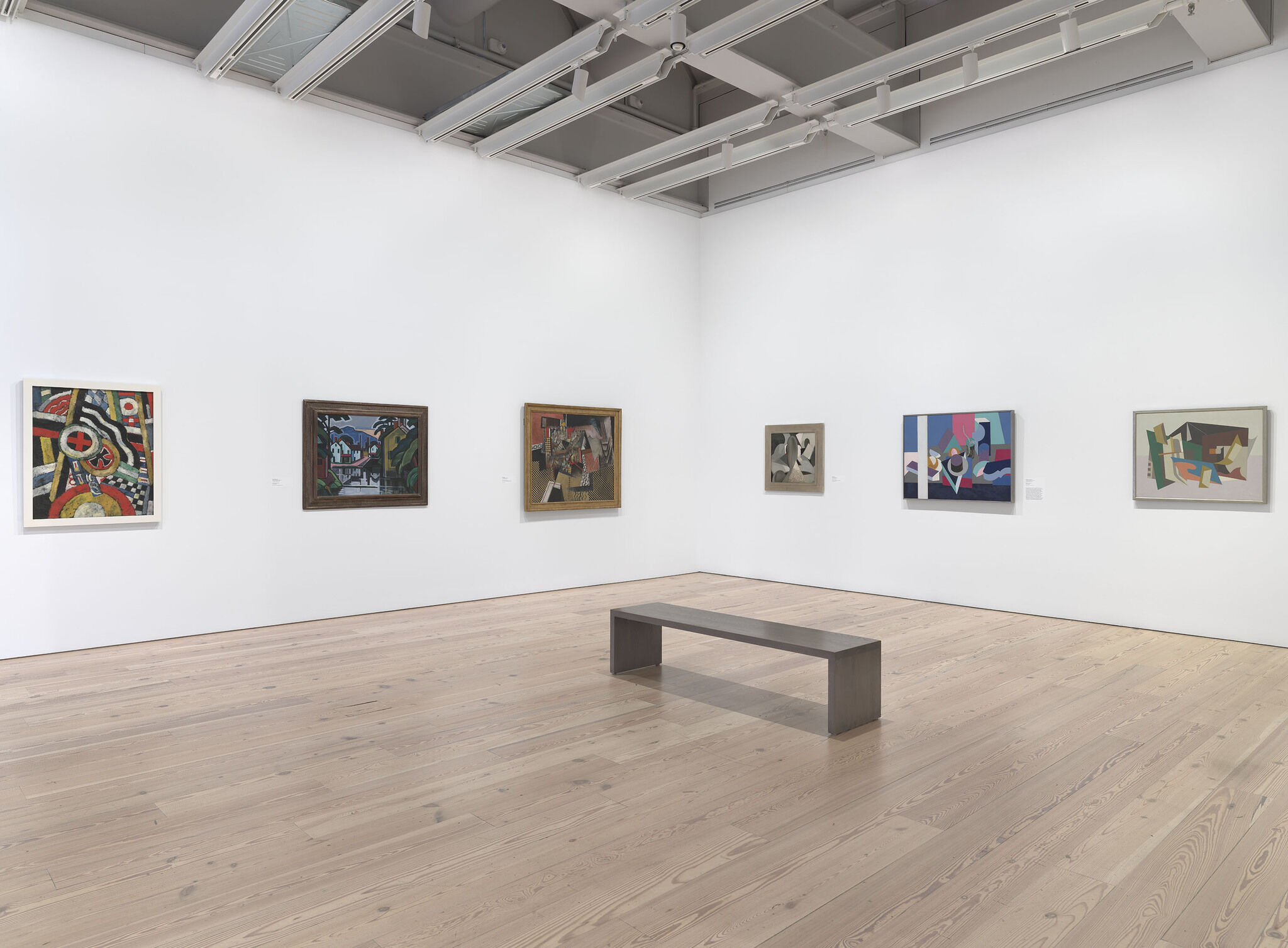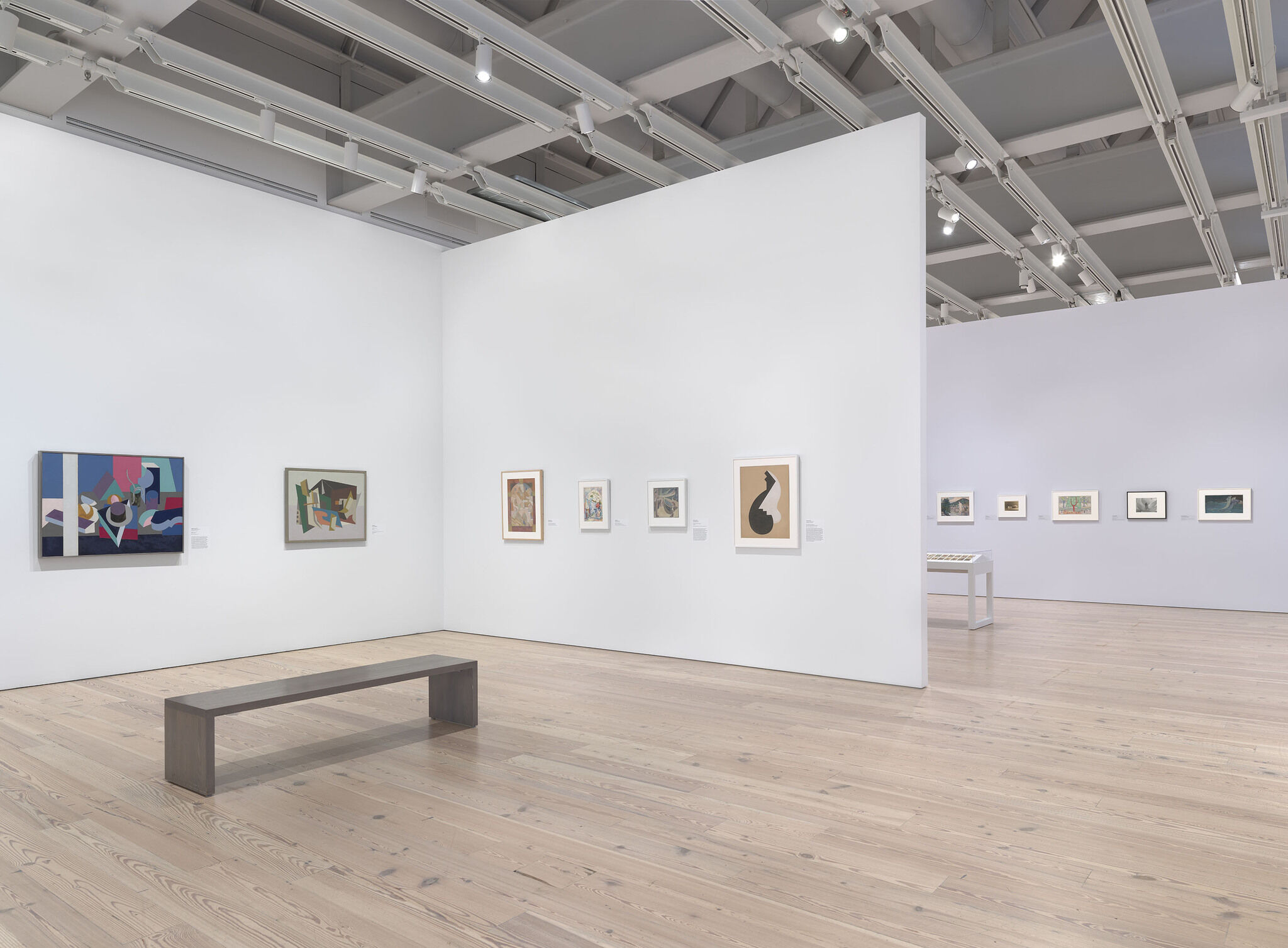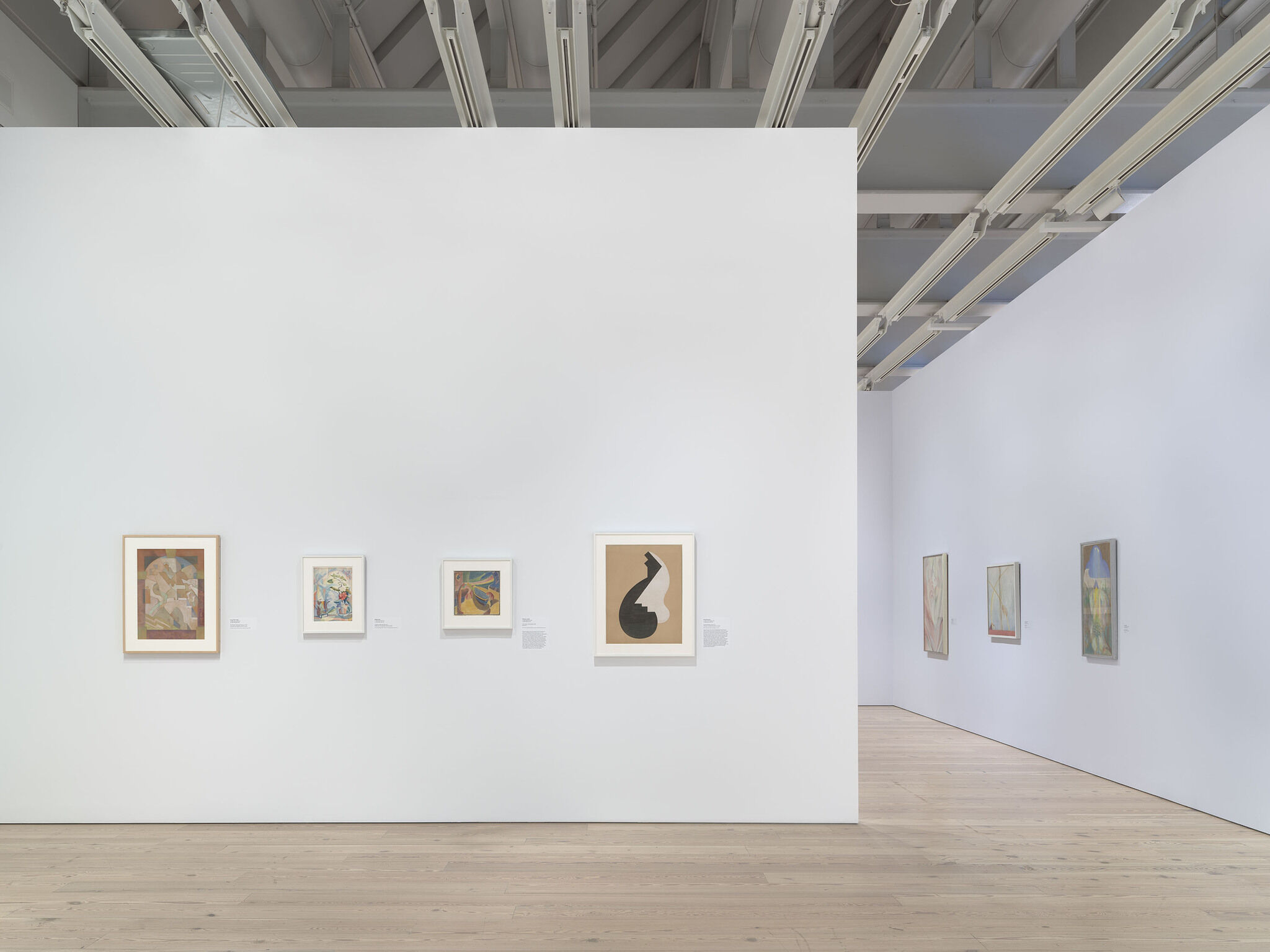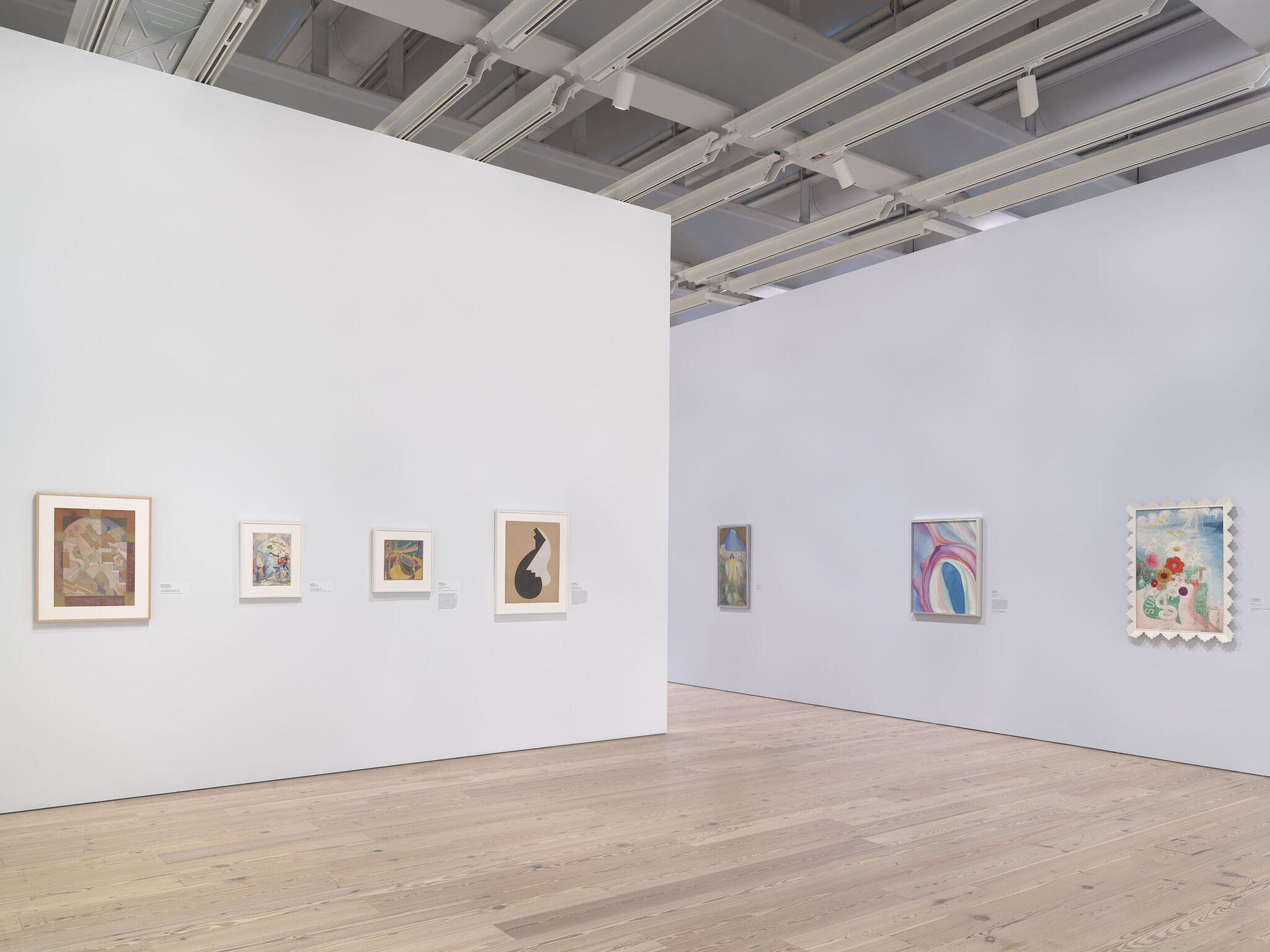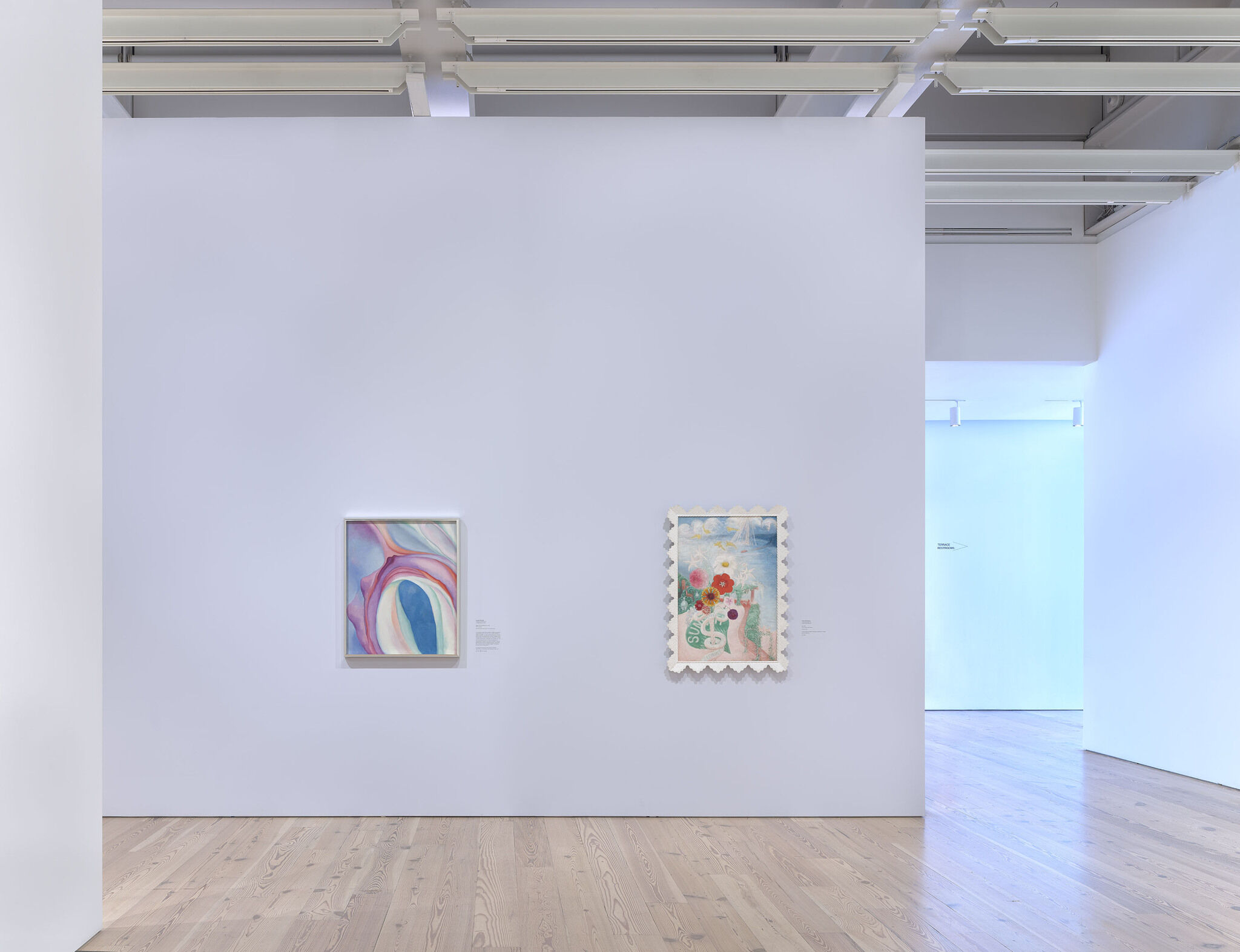At the Dawn of a New Age: Early Twentieth-Century American Modernism
May 7, 2022–Feb 26, 2023
At the Dawn of a New Age: Early Twentieth-Century American Modernism showcases art produced between 1900 and 1930 by well-known American modernists and their now largely forgotten, but equally groundbreaking peers. Drawn primarily from the Whitney’s permanent collection, it provides new perspectives on the myriad ways American artists used nonrepresentational styles developed in Europe to express their subjective responses to the realities of the modern age.
America’s early modernists came of age during a time when the country’s predominant mood was one of youthful confidence. Racial violence and social and economic injustices existed, but so too did insurgency and social reform. American technological and engineering ingenuity had made the country the world’s largest industrial power at the same time that political Progressivism and cultural shifts such as women’s suffrage had upended bourgeois codes of respectability. The combination gave rise to an excitement about an era that critic Walter Lippmann characterized as “bursting with new ideas, new plans, and new hopes.”
Against this backdrop, large numbers of American artists embraced the new over the traditional and fixed by rejecting realistic depictions of the world in favor of art that prioritized emotional experience and harmonious design. The results were largely ignored by the Whitney Museum, whose loyalty was to the urban realists who formed the core of the Whitney Studio Club, out of which the Museum had grown. A handful of non-representational works were acquired when the museum was founded in 1930 and more were added in subsequent decades, but it was not until the mid-1970s that the museum vigorously began to acquire vanguard art made between 1900 and 1930. While extensive, these acquisitions largely excluded work by women and artists of color. The Whitney had already begun rectifying these biases, but in anticipation of the opening of At the Dawn, it added more works by these artists to the collection. The result is an exhibition that recasts the story of American art by celebrating the mood of optimistic excitement with which American artists embraced modern styles and illuminates the complexity and diversity that are at the heart of the American experience.
This exhibition is organized by Barbara Haskell, Curator.
Generous support for At the Dawn of a New Age: Early Twentieth-Century American Modernism is provided by the Barbara Haskell American Fellows Legacy Fund.
Significant support is provided by Amy and David Abrams; Laurie M. Tisch; and public funds from the New York City Department of Cultural Affairs, in partnership with the City Council.
Additional support is provided by Alturas Foundation, Cheryl and Blair Effron, Bernard Goldberg, the Judy and Stanley Katz Family Foundation, Michele Mirman, Garrett Moran and Mary Penniman Moran, Ted and Mary Jo Shen, Marica and Jan Vilcek, and Robin and Marc Wolpow.

Ben Benn
1
Born 1884 in Kamenets-Podolsky, Russia
Died 1983 in New York, NY
Born in Ukraine, Benjamin Rosenberg immigrated with his family to New York at the age of fifteen and changed his name to Ben Benn. A visit to the American Museum of National History in 1902 inspired him to become an artist. After training at the conservative National Academy of Design, he converted to modern art after seeing the 1913 Armory show. His successful assimilation of Cubism and Fauvism was confirmed by his inclusion in the 1916 Forum Exhibition of Modern American Painters, an ambitious survey of work by America’s foremost modernists (many of whom are featured in this exhibition). In the 1920s, the shallow space and flattened geometric forms of Benn’s modernist work gave way to calligraphic, gestural flourishes and a sensuous application of paint that recalled the work of El Greco, whose art had deeply impressed him. What remained constant during his sixty-year career was his commitment to painting the world around him. “One must start with the facts,” he once said. His painterly joy and vigor earned him a prominent place in the art world, with retrospective exhibitions at the Jewish Museum, the Walker Art Center, and the Hirshhorn Museum.
Cowboy and Horse, 1917
Artists
- Richmond Barthé
- Ben Benn
- Albert Bloch
- Oscar Bluemner
- Patrick Henry Bruce
- Charles Burchfield
- Arthur B. Carles
- John Covert
- E.E. Cummings
- Imogen Cunningham
- James Daugherty
- Arthur B. Davies
- Stuart Davis
- Manierre Dawson
- Charles Demuth
- Isami Doi
- Aaron Douglas
- Arthur Dove
- Charles Duncan
- Yun Gee
- Marsden Hartley
- Rebecca Salsbury James
- Loïs Mailou Jones
- Taizo Kato
- Gaston Lachaise
- Blanche Lazzell
- Stanton Macdonald-Wright
- Man Ray
- John Marin
- Elie Nadelman
- Louise Nevelson
- Carl Newman
- Isamu Noguchi
- Chiura Obata
- Georgia O'Keeffe
- Walter Pach
- Agnes Pelton
- Nancy Elizabeth Prophet
- Henry Lyman Sayen
- Charles G. Shaw
- Harry Shigeta
- Henrietta Shore
- Pamela Colman Smith
- Joseph Stella
- Florine Stettheimer
- John Storrs
- Henry Fitch Taylor
- Helen Torr
- Jay Van Everen
- Adele Watson
- Max Weber
- Edith Clifford Williams
- Marguerite Zorach
- William Zorach
Events
View all-
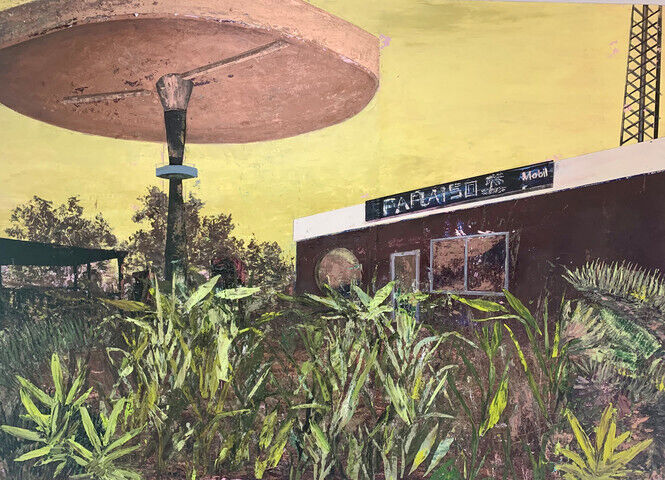
Weekend Member Mornings
Sunday, December 4, 2022
9:30–10:30 am -
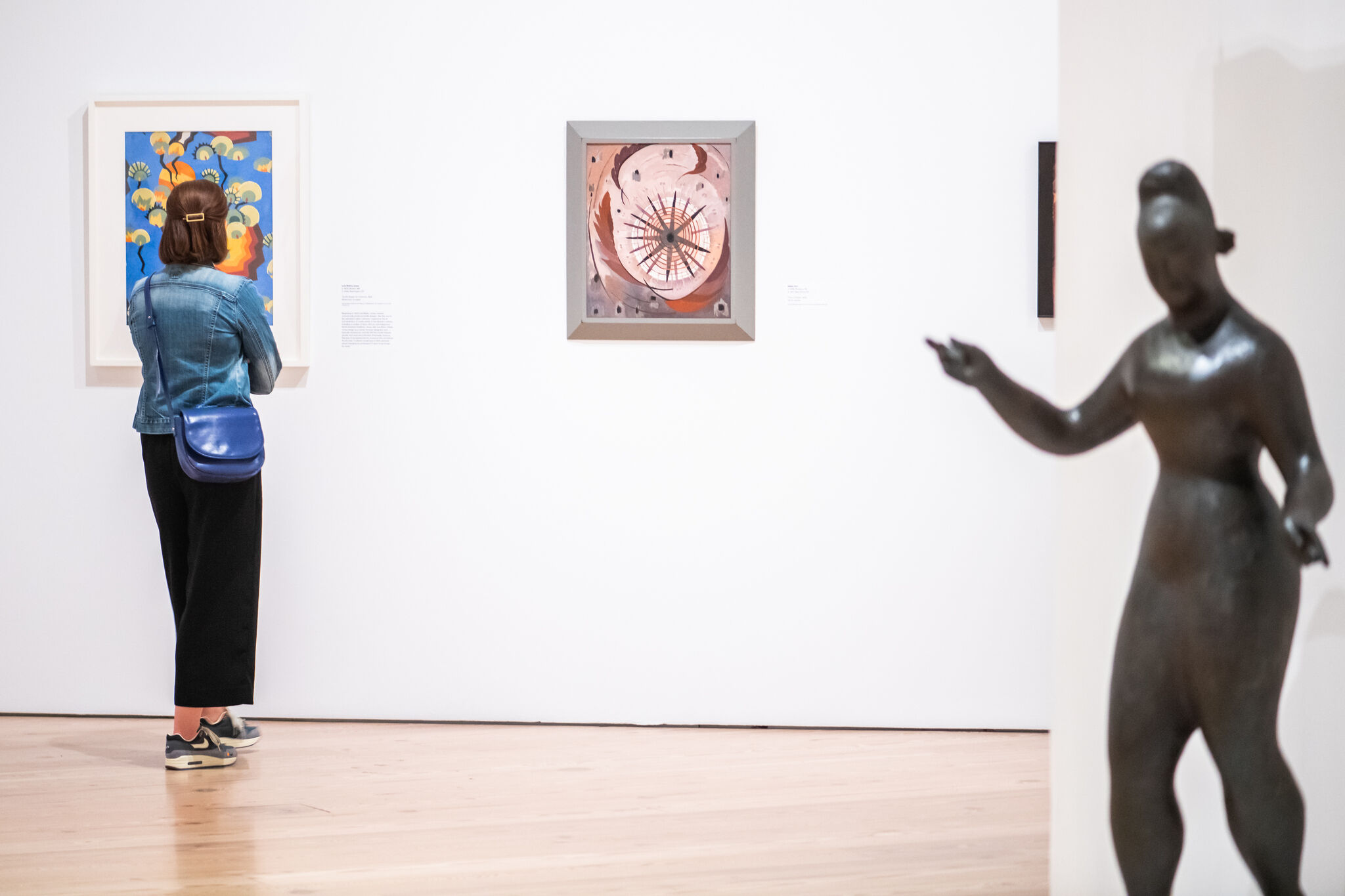
Curator-Led Tour:
At the Dawn of a New AgeThursday, September 29, 2022
7:15 pm -
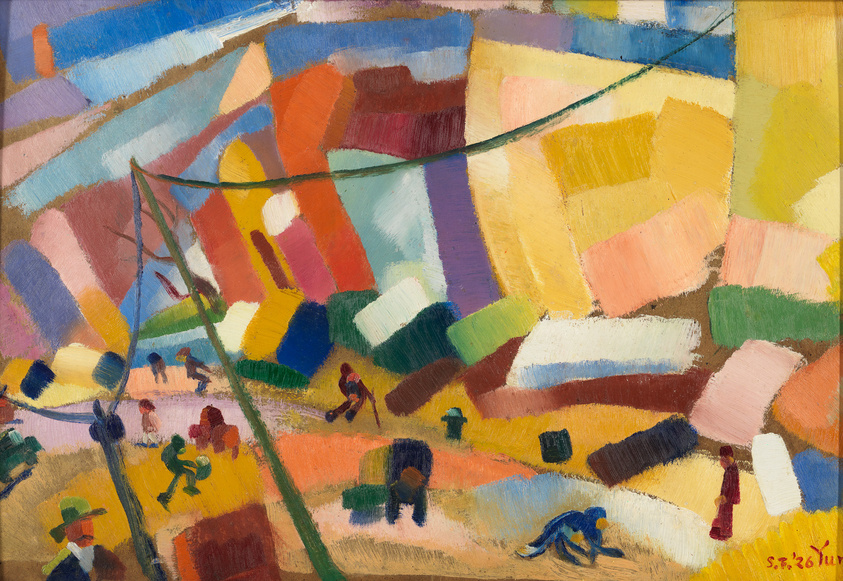
Radical Enchantment: The Politics of Transcendental American Art, 1900–2022
Thursday, July 21, 2022
6–7 pm -
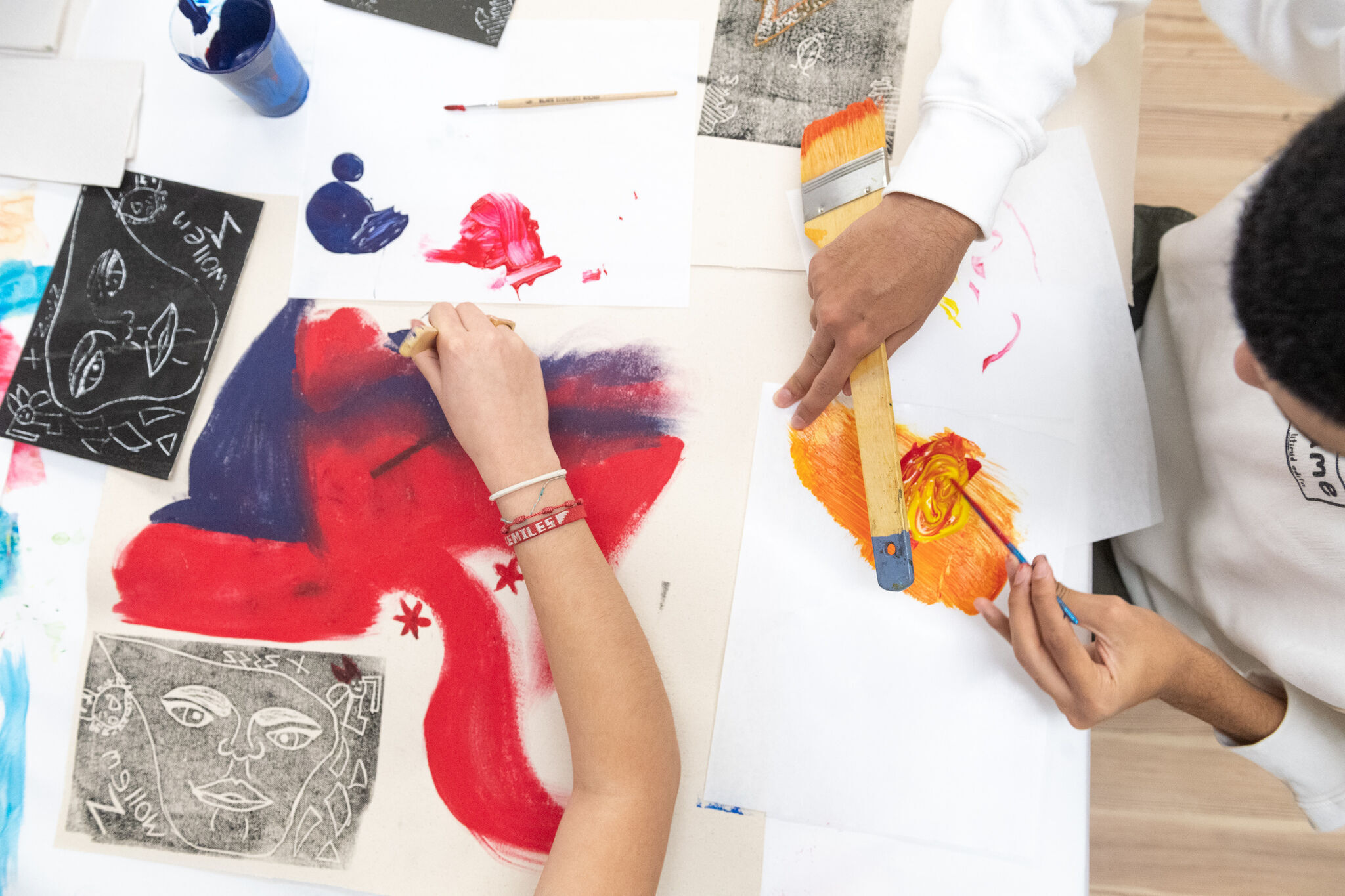
Open Studio for Teens:
At the Dawn of a New AgeFriday, July 15, 2022
1–3 pm
Mobile guides
Learn more about selected works from artists and curators.
View guide
Explore works from this exhibition
in the Whitney's collection
View 86 works
In the News
"We gain insight into the trailblazing careers of artists such as Henrietta Shore, Charles Duncan, Yun Gee, Manierre Dawson, Blanche Lazzell, Ben Benn, Isami Doi, and Albert Bloch, who have been left out of the leading narrative."—Forbes
"…una exposición que reformula la historia del arte estadounidense al recordar y celebrar el entusiasmo con el que los artistas de aquella época indagaron y adoptaron estilos modernos."—National Geographic Español
"…the show is a riot of colors, moods and styles, giving a sense of the heady experimentation at work as artists hewed out a distinctively American modernism."—The Guardian
"…Pamela Colman Smith has been included in a new exhibition at the Whitney Museum of American Art in New York highlighting many underappreciated artists of early 20th-century American modernism in addition to famous names like Georgia O'Keeffe and Louise Nevelson."—CNN Style
"You are there, immersed in peaks and valleys of an effervescent day and age."—New Yorker
"…this show looks at some of the artistic roots of the contemporary moment through more than 60 works made from 1900 to 1930."—New York Times
-…the exhibition is an opportunity to reassess and expand not only the Whitney’s collection but its take on a pivotal era of American art."—Wall Street Journal
"Dominating the show as we round out our tour is the realization of the innovative spirit and ingenuity that pervaded America."—Art & Antiques Magazine

